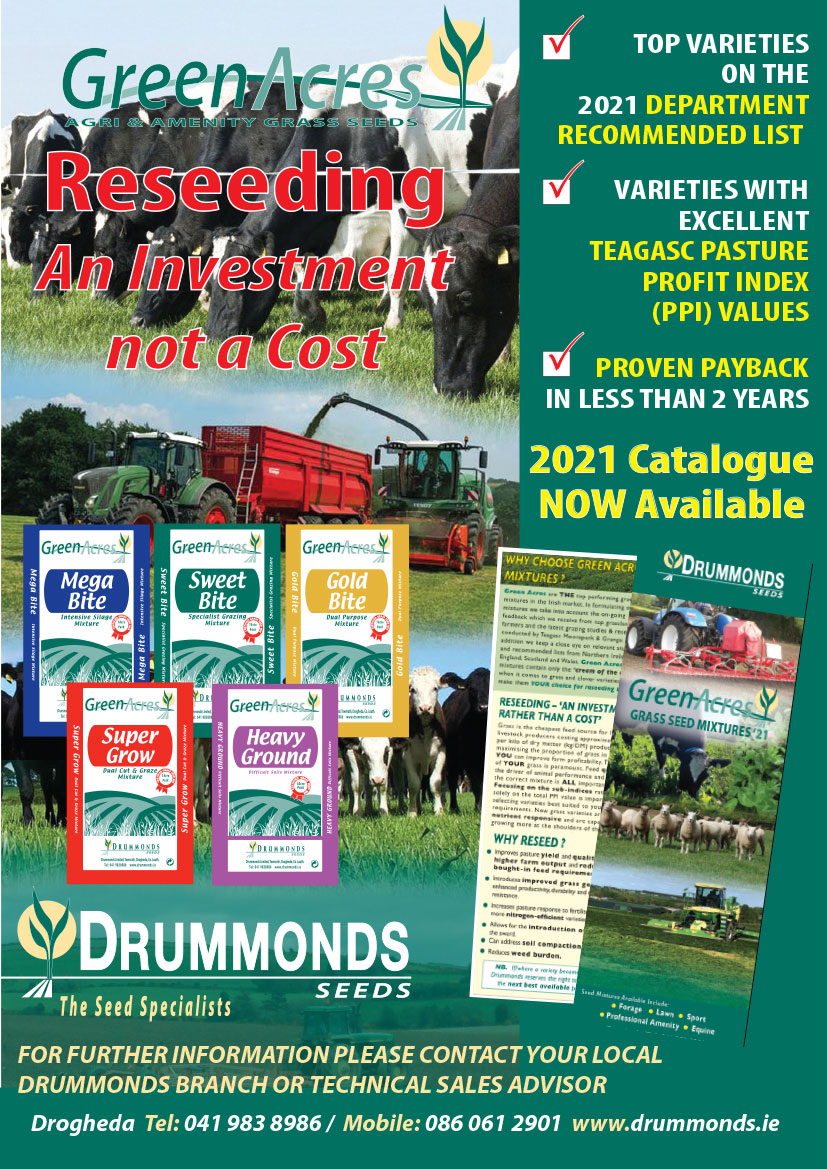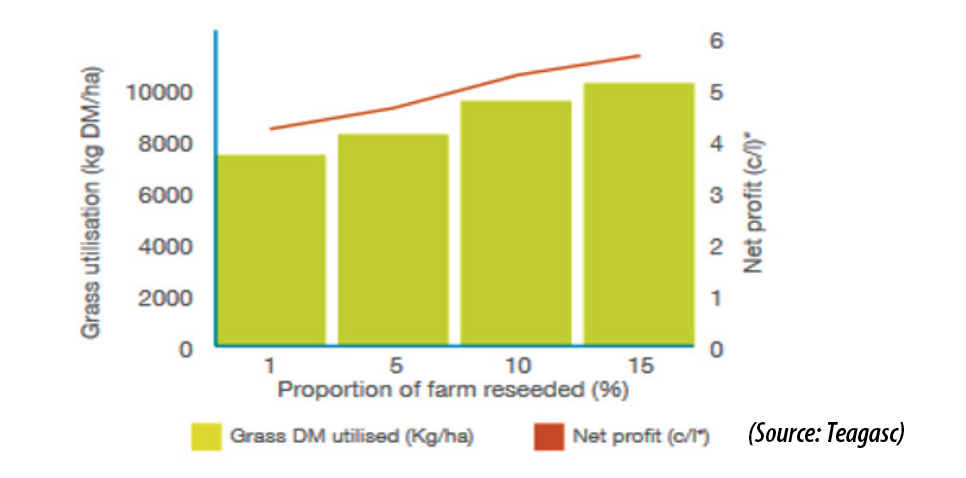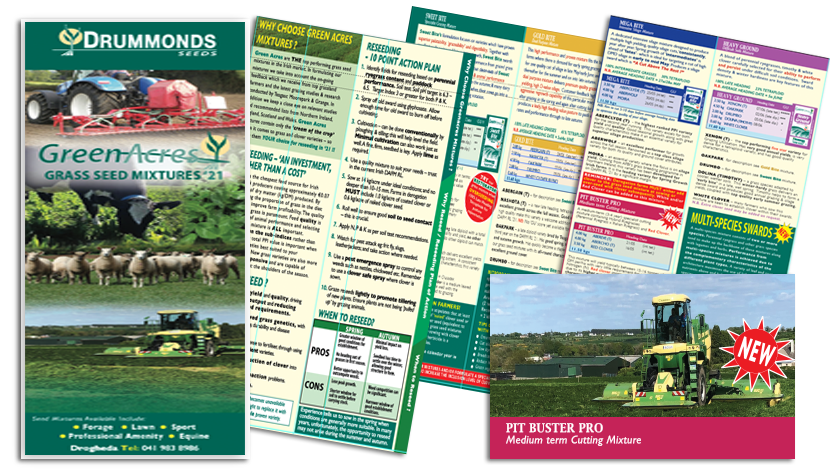Grass is the most important, yet often overlooked, resource for livestock production. Well-managed grassland provides the most economic feed throughout the year, costing approximately €0.07 cents per kilo of dry matter (kg/DM) produced.
However, all too often, grassland underperforms. Inadequate crop nutrition, soil compaction, weed infestation and poor sward quality will all result in reduced performance. Reseeding may resolve some of these issues but it is very important to get the fundamentals within the soil right beforehand.
The decision to reseed a field should be based on the field’s performance in terms of grass growth, this is largely down to the amount of Perennial Ryegrass within the sward. If a sward is not very old and has a small amount of Perennial Ryegrass, consider why it has deteriorated and correct problems, such as soil pH , before reseeding. Target 70% ‘sown’ species (i.e. Perennial Ryegrass) within a sward. Digestibility, grass utilisation and animal performance will all be suboptimal where poorer quality native grasses such as Meadowgrass or Yorkshire Fog are dominant within the sward.
 By maximising the proportion of grass in the diet we can improve profitability – but the quality of your grass is fundamental to this. It is advised to use the Teagasc PPI list when selecting grass varieties to sow – focusing on the sub indices rather than solely on the total PPI value is important when selecting varieties best suited to your requirements. Research from Teagasc Moorepark has shown a direct link between farm profitability and the utilisation of swards. A new ‘Grazing Utilisation’ parameter has been added to the 2021 PPI. This is based on trial work at Teagasc Moorepark which focusses on cow grazing and residual grazing targets in single variety plots.
By maximising the proportion of grass in the diet we can improve profitability – but the quality of your grass is fundamental to this. It is advised to use the Teagasc PPI list when selecting grass varieties to sow – focusing on the sub indices rather than solely on the total PPI value is important when selecting varieties best suited to your requirements. Research from Teagasc Moorepark has shown a direct link between farm profitability and the utilisation of swards. A new ‘Grazing Utilisation’ parameter has been added to the 2021 PPI. This is based on trial work at Teagasc Moorepark which focusses on cow grazing and residual grazing targets in single variety plots.
Drummonds’ Green Acres grass seed range is made up of the top performing grass varieties on the market and this can be backed up by users all across Ireland.
Feedback from current users of Green Acres mixtures as well as research coming from Teagasc enables us at Drummonds to formulate top class grassland mixtures to suit every purpose.
Multi species swards
As pressure mounts on the Irish agricultural sector to reduce the level of chemical Nitrogen applied on farms, industry, along with farmers, are now having to consider diversifying away from the usual Nitrogen hungry perennial ryegrass, and into other areas such as multi-species swards.
A multi-species mixture is made up of two or more species. Perennial ryegrass and other grass varieties tend to make up the backbone of these mixtures along with legumes and herbs.
Performance from multi species mixtures is achieved due to the complementary characteristics of these different plant types. A variety of leaf and root architecture maximise the use of light, moisture and nutrients above and below ground.
The deep rooting species such as perennial chicory and plantain means nutrients are being taken up from a different part of the soil profile than is the case with shallower rooting ryegrasses. Having a range of different species will also mean multiple sources of protein, energy and minerals, presenting a more complete nutritional profile to the grazing animal.
Research on multi species swards is ongoing, with a lot of emphasis on lamb finishing and youngstock grazing as well as the environmental benefits associated with multi species swards. Teagasc is currently investigating the role multi species swards may have in dairy grazing platforms in the future.
At Drummonds, we can supply bespoke grass seed mixtures to suit your system, this includes multi species varieties. For more information talk to your local Technical Sales Advisor.
Article written by:
Bill Reilly. Technical Sales Advisor – Tel: 086 061 2901

